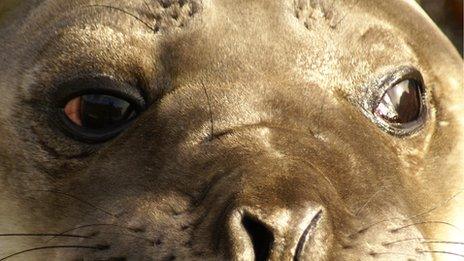Mouse's midnight snack takes ecology photo prize
- Published
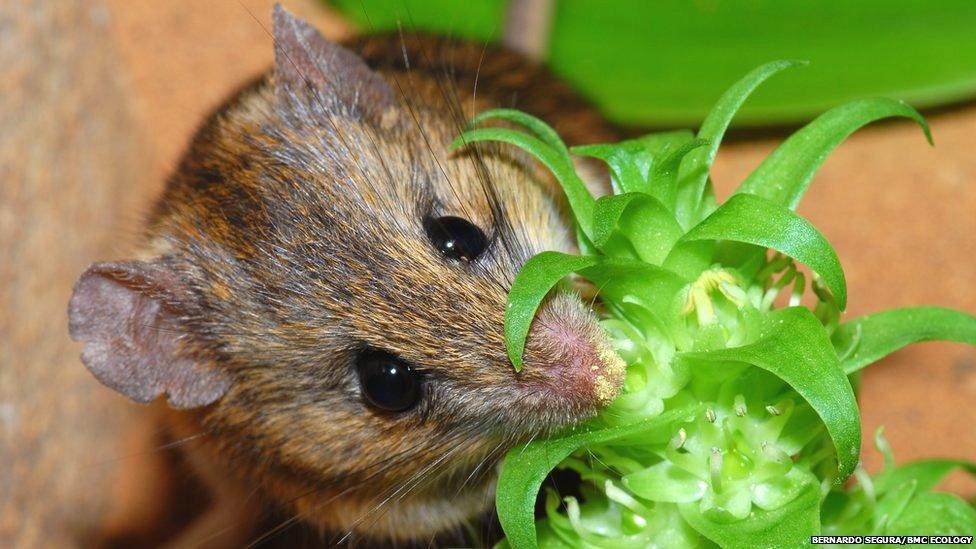
This shot was the overall winner of the Ecology Image Competition run by the journal BMC Ecology. It shows a Namaqua rock mouse getting dusted with pollen as it takes a night-time drink from a Pagoda lily in South Africa, and marks the first time that "nocturnal rodent pollination" has been captured on film in the wild. (Photo: Petra Wester)
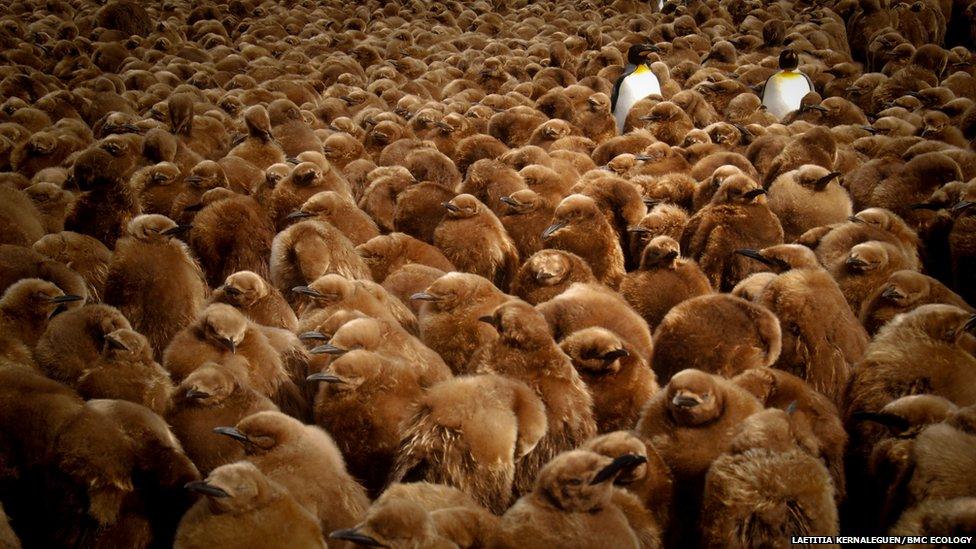
The "editor's pick" of the competition was this image of a "creche" of King penguin chicks, with two adults vastly outnumbered in the background. (Photo: Laetitia Kernaleguen)

The dedicated parenting of this black-browed albatross, photographed in the Falkland Islands, was the competition's overall runner-up. (Photo: Letizia Campioni)
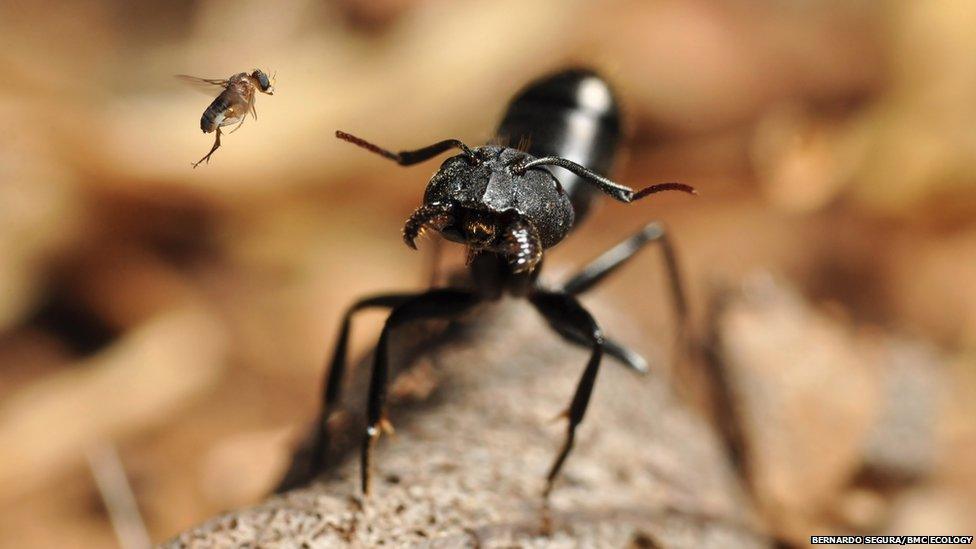
The behavioural ecology category was won by this photograph, taken in central Chile, of an ant being attacked by a parasitoid fly. The researchers believe the fly was attracted by alarm pheromones that two colonies of ants released while they were fighting each other. (Photo: Bernardo Segura)

The winner of the landscape ecology category was this dramatic photograph showing an unusually regular arrangement of plants, scraping a living in California's Death Valley. Precipitation here rarely exceeds 100mm in a year. (Photo: Benjamin Blonder)
.jpg)
Snapped during an expedition to anesthetise the male lion on the left with a tranquiliser dart, this image from Pilanesberg National Park in South Africa was one of 22 highly commended photos in the competition. The impala being torn apart was used as bait. (Photo: Graeme Shannon)
.jpg)
Also highly commended was a photograph depicting the intense competition for space between zoanthids (a type of coral) and barnacles on the western coast of India. It shows the barnacles being progressively swallowed up by the accumulation of zoanthids, which multiply by budding. (Photo: Paresh Poriya)
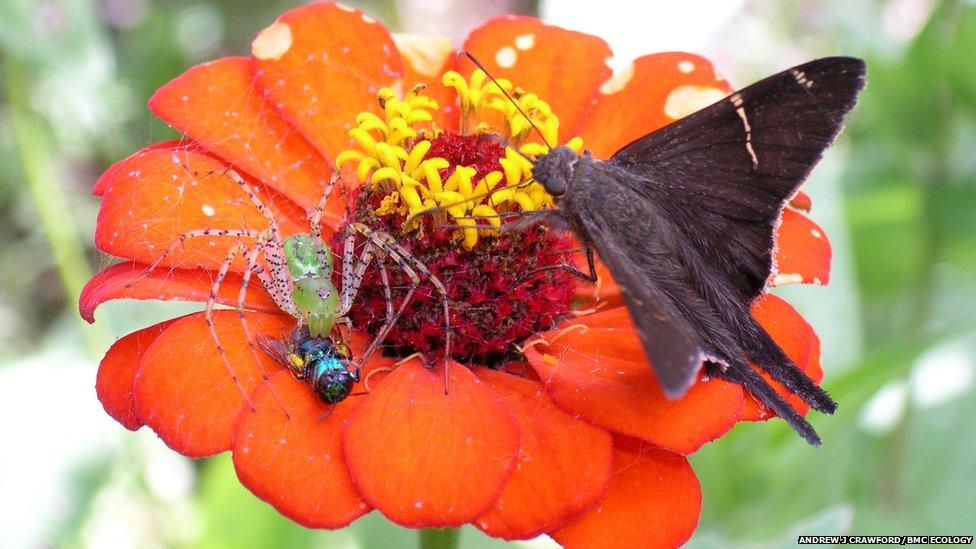
Capturing two simultaneous meals on a single flower in the mountains of eastern Panama, this image won the "Community, population and macroecology" category. It shows a Crab spider preying on a bee, while a butterfly coincidently looks for nectar. (Photo: Andrew J. Crawford)
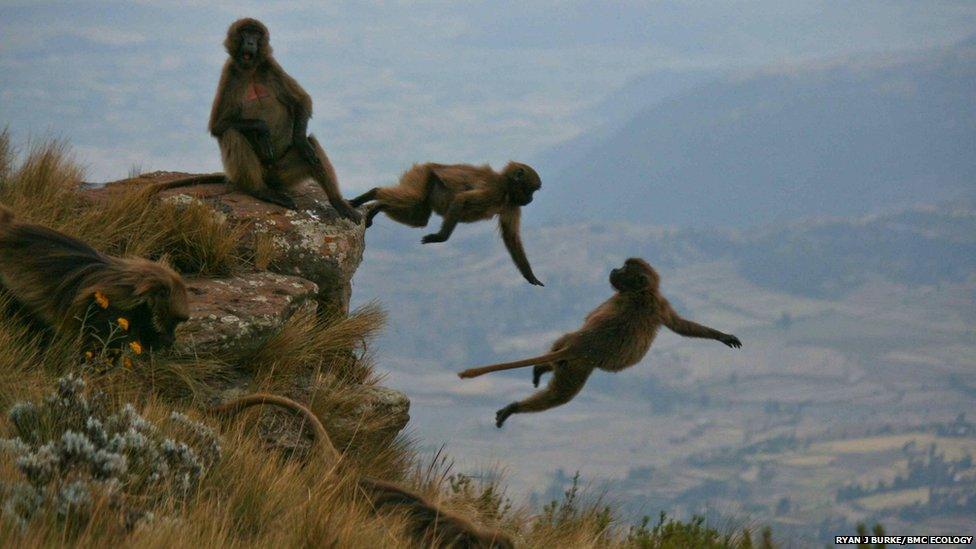
These geladas were caught doing some recreational acrobatics as they descended a steep slope at sunset, heading for shelter from predators in the Ethiopian highlands. The shot was highly commended by the judges. (Photo: Ryan J Burke)
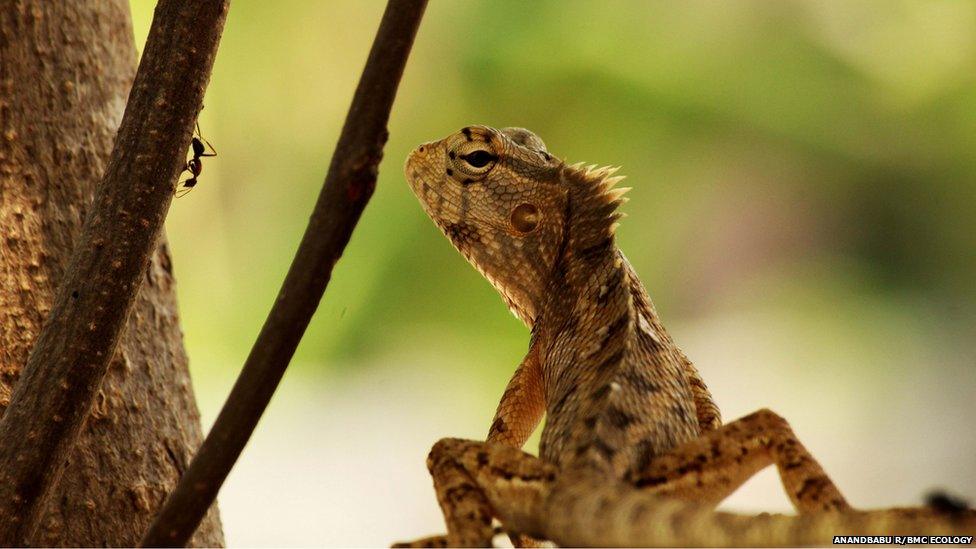
This Oriental Garden lizard, photographed eyeing up its next meal in another highly commended entry, would also eat rodents and other smaller lizards. (Photo: Anandbabu R.)
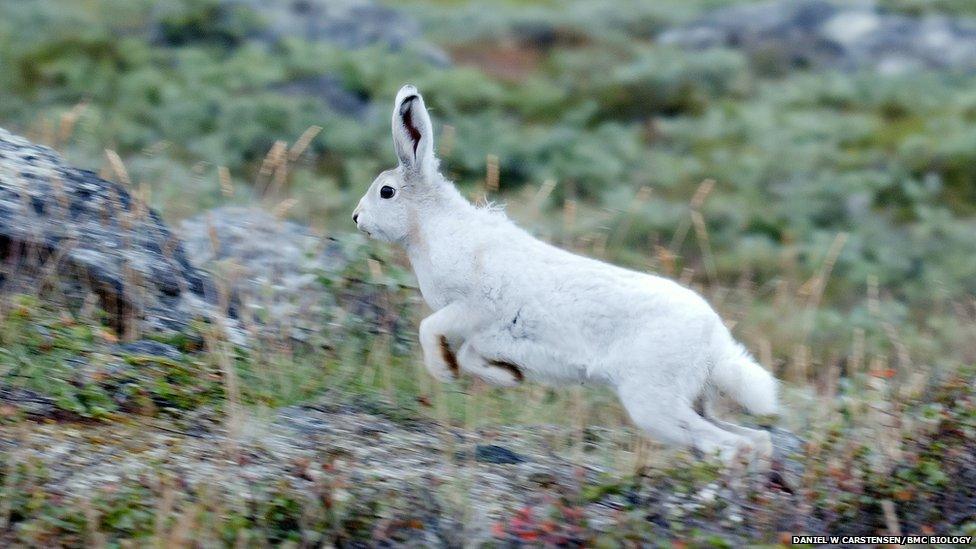
Seen sprinting across the Greenland tundra, this Arctic hare has made an unfortunately early start on growing its white winter coat, which is perfect camouflage after snow falls but leaves the hare vulnerable in the late summer. (Photo: Daniel W. Carstensen)
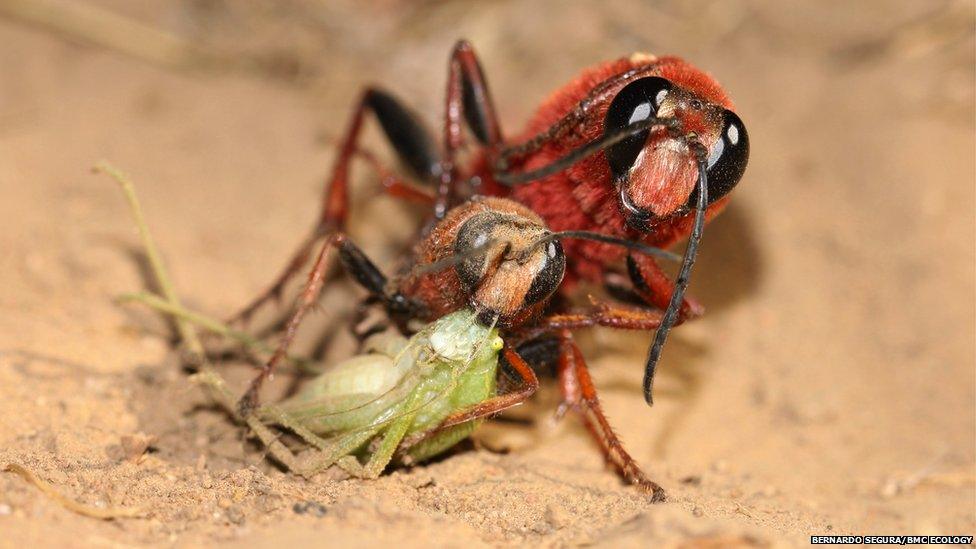
This photograph captures a particularly unusual mating ritual, whereby the male Sphecid wasp waits until the female's legs are busy carrying prey before pouncing and propelling her to the ground. The rest of the time, females beat away male advances. (Photo: Bernardo Segura)
.jpg)
Another highly commended photograph captures a rather uneven contest between two hippos in a water hole in Amboseli National Park, Kenya. Because of the mismatch in size and the apparently lower than usual level of aggression, the researchers believe this may have been a playful display rather than a territorial dispute. (Photo: Graeme Shannon)

An army marching through a forest: Soldier crabs spend most of their time buried in the sand but emerge at low tide and roam in groups like the one seen here, negotiating a mud flat punctured by many mangrove roots. Analysing Soldier crabs can help with monitoring the levels of heavy metal pollution in waterways. (Photo: Matthew Nitschke)

Ignoring the advice of fellow ecologists, the photographer responsible for capturing this mother and infant chimpanzee actually climbed 25m up into the same tree. He observed many previously unseen types of behaviour and demonstrated that if chimpanzees are accustomed to human observers, they will tolerate them climbing nearby. (Photo: Alain Houle) Words by Jonathan Webb
- Published22 May 2014
- Published24 August 2014
